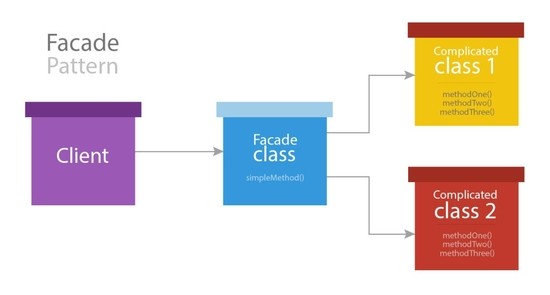Props to SitePoint for sharing such informative and helpful knowledge about facades in Laravel.
The facade pattern is a software design pattern that is often used in object-oriented programming.
A facade is a class wrapping a complex library to provide a simpler and more readable interface to it.
![Facade pattern]()
Facades in Laravel
Facades provide a "static" interface to classes that are available in the application's service container. Laravel ships with many facades which provide access to almost all of Laravel's features. Laravel facades serve as "static proxies" to underlying classes in the service container, providing the benefit of a terse, expressive syntax while maintaining more testability and flexibility than traditional static methods.
How Facades Are implemented in Laravel
Every service inside the container has a unique name. In a Laravel application, to access a service directly from the container, we can use the App::make() method or the app() helper function.
<?php
App::make('some_service')->methodName();
In Laravel, all services have a facade class. These facade classes extend the base Facade class which is part of the Illuminate/Support package. The only thing that they need to implement is the getFacadeAccessor method, which returns the service name inside the container.


cacheinstances? – Dikmen